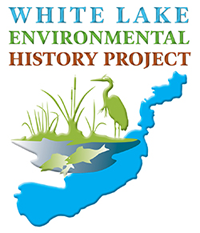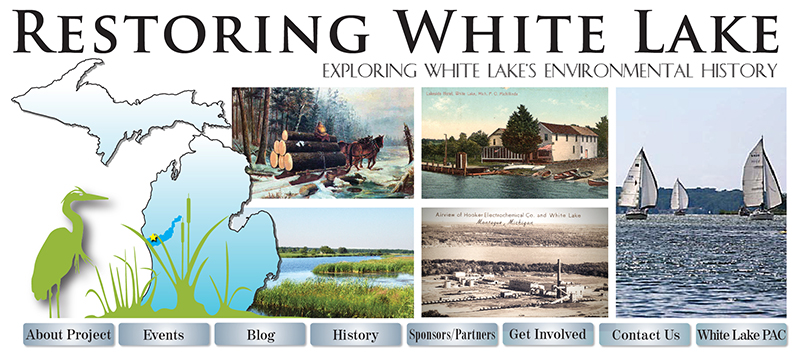White Lake Area
Contaminated Sites Database
One of the problems that helped put White Lake on the list of 43 Great Lakes Areas of Concern or “toxic hotspots” in 1985 was a number of environmentally-contaminated sites on or around the lake, from chemical manufacturing industries, a tannery, municipal discharges, and discharges from other businesses.
As part of the effort to restore White Lake over the past few decades, the White Lake Public Advisory Council (PAC), working with state and federal environmental agencies, pushed for documentation that all the contaminated sites had been identified, had remedial action plans to address contamination, and that no private or public drinking water sources were potentially endangered. This research and information was detailed in a briefing paper.
Adobe Reader is required to open and view the briefing paper. Depending upon your browser, the downloaded paper will either open in a new window or be downloaded directly to your computer. You may then view it and/or save it to your computer. Be advised that the briefing paper is 104 pages long!
It was understood, however, that citizens in the White Lake area would need to monitor these sites for many years into the future and offer their input at decision points. This database will help accomplish that goal. There are fields for summaries of current status, opportunities for public input, external links, photos, and contacts for each site. Not all fields will contain content and the database will continue to be updated over time.
WhiteLakeMapThe “date stamp” following the link "View the List" (below) to the database indicates the latest update. Please check this page regularly to monitor the information in the database.
View the List (this list was updated on May 5, 2019)
Adobe Reader is required to open and view the contaminated site database file. Depending upon your browser, the downloaded file will either open in a new window or be downloaded directly to your computer. You may then view it and/or save it to your computer
Acronyms Used
A variety of acronyms are used in the Contaminated Sites Database. Please consult the Department of Environmental Quality (DEQ) list of acronyms to help you interpret the database file.
Adobe Reader is required to open and view the contaminated site database file. Depending upon your browser, the downloaded file will either open in a new window or be downloaded directly to your computer. You may then view it and/or save it to your computer
Area Maps
Follow the links to view maps of the sites listed in the Contaminated Sites Database.
| Location of Sites (PDF) | Location of Sites, Aerial Image (PDF) |
| Adobe Reader is required to open and view the downloaded maps listed above. Depending upon your browser, the downloaded maps will either open in a new window or be downloaded directly to your computer. You may then view the map and/or save it to your computer. | |
| Interactive Map of Site Locations | «When you click on the link to the left you will be sent to a new page with an online GIS-generated map. This file may take a few moments to load—depending upon the speed of your connection! |
Contact Us
If you have any questions or comments regarding the Contaminated Sites Database please Contact Us!
